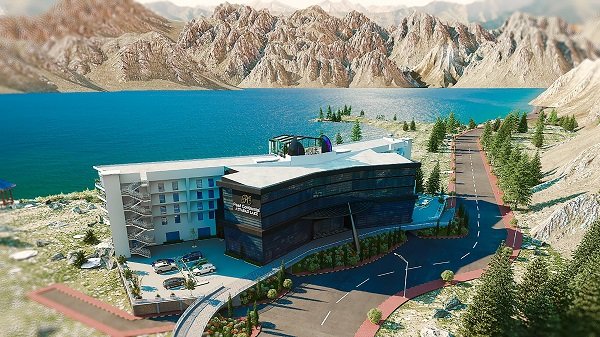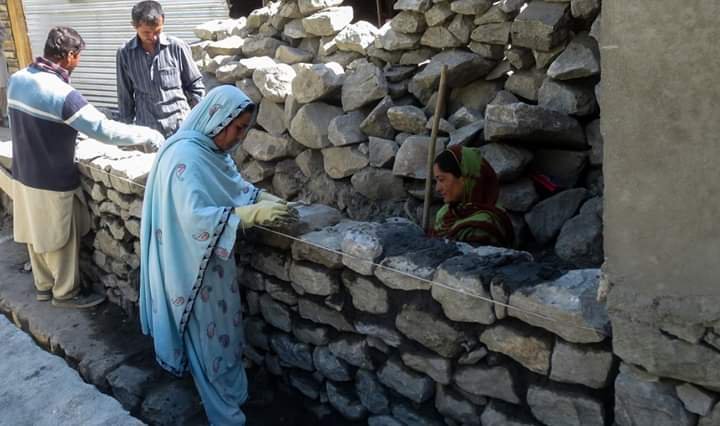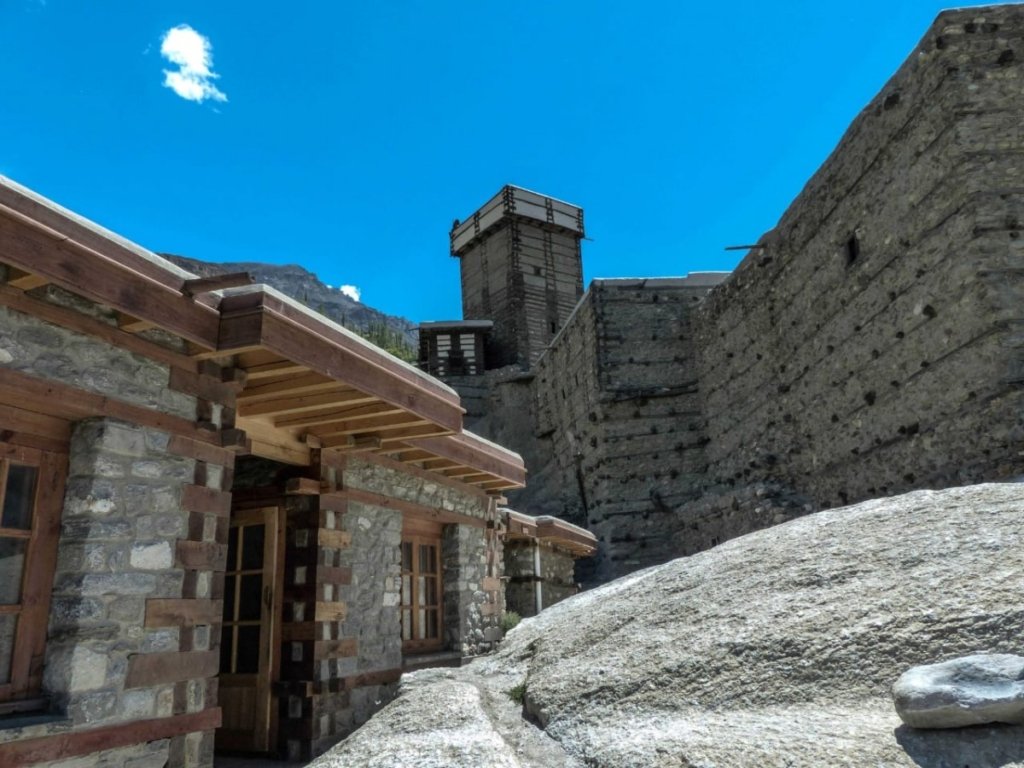While going through comments on social media recently, I realized that a large number of professionals and activists are emphasizing ‘Investment as a major vehicle for development and growth’ of Gilgit-Baltistan (GB), particularly for Hunza. According to them, investments will create jobs and income-earning opportunities; some of them even suggested that business entities as part of their corporate social responsibility (CSR) should earmark a small portion of their profits and contribute towards social upliftment including climate change mitigation.
This is a classical example of trickle-down economic theory which has been widely rejected universally by now.
In the case of investment in the unregulated tourism sector, there is a need to identify fundamental contributing factors of the sector keeping the classical factors of land, labour, and capital in mind. Primary factors of tourism are unique natural heritage such as high mountains, cool climate, glaciers, lakes, and tangible and intangible cultural heritages including architectural monuments, music, food, crafts.
Sadly, the traditional concept of wealth generation does not consider nature (ecology) and its systems as main factors rather take them as an externality and free of cost.
With the looming catastrophic climate change impacts, we cannot ignore ecology and its systems the way investors or economists call it an externality and claim their right over unlimited use of natural resources.
With the looming catastrophic climate change impacts, we cannot ignore ecology and its systems the way investors or economists call it an externality and claim their right over unlimited use of natural resources such as water and air.
For instance, in GB and specifically in Hunza, ecology and eco-systems have compelled people to devise limits for economic and social systems under customary laws and a prime example is seasonal subsistence farming. The carrying capacity of Hunza, use and availability of land, water, and climatic conditions, therefore, does not allow an unlimited population growth, unregulated massive construction with industrial materials, higher energy consumption.

Serena Hotel takes over Altit Fort. 
Design of PC being built at the bank of Attabad lake.
If unplanned unregulated construction is allowed for some time, it will trigger various complex issues raising questions of the social and economic sustainability of the area and its future generations.
Imagine what will be the scenario of traffic and environmental pollution in the central Hunza with its limited cultivable or habitable land, ecologically regulated glacial water from Ultar as the main source, steep uneven topography, and thin topsoil, increasing population if our over-riding desire for higher investment, rapid development, and spiral growth continues?
The people of Hunza have already been struggling to have access to water for domestic use and small farming activities, uninterrupted electricity, quality health and educational facilities. Although the level of domestic consumption of water is still not very high and water for the farming requirements is seasonal, commercial usage of the commodity is increasing at an alarming ratio creating at times brief spells of shortages in summer season.
Tourism activities, particularly hotels and restaurants require round-the-clock access to water for their commercial operations. Overall demand for water consumption (domestic, farming, and commercial) will continue to increase with no increase in supply. Meeting total demand will, therefore, require a permanent decrease in one of the water-consumption types as well as an alternative supply system.
This raises the fundamental question of water rights, which has historical, political, and legal underpinnings.
For example, if we want more luxury hotels in Hunza to attract higher investment, our newfound magic solution for well-being, to increase employment opportunities and other indirect benefits, the only solution could be to ask or force people outside the hospitality sector to stop small farming activities permanently and reduce domestic consumption, compromise on their quality of life and surrender their historical, legal and fundamental rights to cultivate their land and have access to the most important commodity for domestic use. This, surely, will result in developing a new form of abject poverty and a predetermined economically crippled generation. But why this should happen just to ensure higher annual profits for luxury hotel owners or create monopoly and hegemony of a few business tycoons? Is this ethical in any sense? The clear answer is a big ‘No’.
Let’s now look at the specific cases of the so-called investment and luxury hotels being built in Karimabad. The sanitation system was designed for Karimabad, Ganish and Mominabad based on domestic requirements, estimated population growth and commercial needs in early 2002-03. Back then there were fewer hotels such as Serena (26 rooms), Darbar (30 rooms), Hunza Embassy (15 rooms), Hill Top 15 rooms and a few more with not more than 5 rooms.
Likewise, the sanitation system in Altit was laid in three phases for the historic settlement followed by a polo ground, Giram and Harchi and lastly for Dagandas-Burumbun and Chukushal. All these projects were fully funded by the Japanese embassy as part of their grassroots poverty programme. As of now, over 500 hotel rooms have been added in Karimabad, Ganish, Mominabad and Altit alone excluding Duikar which does not have access to the Altit sanitation system.
More hotels and guest houses are coming up and prominent among them are Serena Hotel with 80 rooms and Pearl Continental with 50 rooms in Karimabad and Mominabad respectively, just below the historic channel Dala which irrigates almost 50% area of central Hunza.
My question is how these two big upcoming hotels will fulfil their 24/7 water requirements? The land on which these structures are being built has been used by locals as farm and grassland as per the customary traditional rules of water consumption seasonally and at best once for few hours in a week from June to September.
Of course, these two big hotels will not and cannot rely on the availability of seasonal water rights transferred through the purchase of land and make their business entities functional, ensure the safe return of their investment with expected profits. Both Serena and PC will be high water consumption hotels between 300 to 750 litres per guest/day and maintain pressurised showers and taps fitted in washrooms, round-the-clock laundry service, kitchen, and outdoor usage. Wastewater generated from 130 rooms combined with the current total flow into the main sewer lines, will result in frequent choking of the mainline and spillover poisoning small farms and orchards.
The issue with the underground sanitation systems is once you get connected with the mainline, one cannot measure the amount of wastewater by a particular user, nor a connection can be snapped easily in case of non-payment of user fee. More importantly, once mainlines start overflowing, it becomes extremely difficult to stop big leakages because there are no alternative main sewerage lines to divert the extra inflows. Such a level of failure of sanitation system in steep terrain will be too dangerous for the survival of local farming practices and human health for the population living at lower levels.
In the case of Altit Fort, the original adaptive reuse agreed by conservationists and planning experts was to restore the Fort and garden without adding new commercial spaces and functions except a few which were critical and necessary for its financial sustainability during the post-restoration period. As a result of ‘Conservation, Restoration and Adaptive Re-use Plan, upgradation of the settlement around the Fort were initiated with a filtration plant designed to provide clean drinking water and sanitation facilities to around 150 households living in and around the settlement and the Fort keeping in mind population growth and some commercial activities. Water requirements in the restored Fort were calculated based on several public toilets designed for visitors, seating capacity and the number of covers estimated for café in Mir’s Summer House, Ameen Khan House (former owner of Altit Fort), a small exhibition-cum-display facility, which later became Leif Larsen Music Centre, and staff kitchen and office area.
Building hotel rooms in the garden was never part of the original plan. Construction of 10 luxury huts in the historic terrace of Altit Fort Garden, the only authentic place where mythical shamans — Shon Gukur, Huk Gukur, Bitan Mano, and more recently Rahimo — danced and prophesied for centuries, is in the first-place destruction and distortion of history and historic landscape; and secondly adding Serena as a prefix to Altit Fort means changing status of the ownership and is asset capturing.
Traditionally, Altit Fort and its garden owned by Mirs of Hunza used to get water for one full night in a week from May to October which is still in practice.
However, after setting up over 15 luxury rooms, this hotel would require uninterrupted 24/7 access to water whereas the treatment plant from which Altit Fort gets water has limited capacity to cater to the domestic requirements of the local community and intensive usage of Serena hotel. Consequently, the impact of Serena running a hotel inside Altit Fort premises will be severe and multiple. To sustain its expensive operations, the hotel will usurp the fundamental rights of the people of Altit by disrupting their access to clean drinking water and overburdening fragile sanitation system which will collapse very soon.
“In Hunza where people are still struggling to have access to basic needs, luxury and hotels with high inventory will have disastrous outcomes”
Five-star hotels, by virtue of standards set for recognition and certification, require 24/7 running water, electricity, airconditioning, laundry and room service apart from other amenities. Such chain hotels use their own centralized procurement system for all kinds of purchase which involves long-distance supply chains and contribute high carbon emission and pollution. Similarly, they generate higher waste including solid, liquid and food.
Thus, in the context of Hunza luxury hotels with high inventory will have a disastrous impact on the area exacerbating the multiple crises of drinking water shortage, power outages, poisoning of the land and watercourse due to frequent leakages of sanitation system. People living below tourist facilities such as Ganish will be at higher risk. Even their future generation, who are not here to challenge, will be deprived of the right to life, and the right to property.
It will also cause a sharp rise in the prevalence of water-borne diseases and loss of income for small farmers, air pollution and almost zero contribution to the local economy except for a few low-paying jobs. The same applies to PC at Attabad.

Safiullah Baig is an Islamabad-based independent consultant and expert on culture and tourism

The High Asia Herald is a member of High Asia Media Group — a window to High Asia and Central Asia




One thought on “Potential impacts of 5-star hotels on Hunza’s ecology”
Nice article